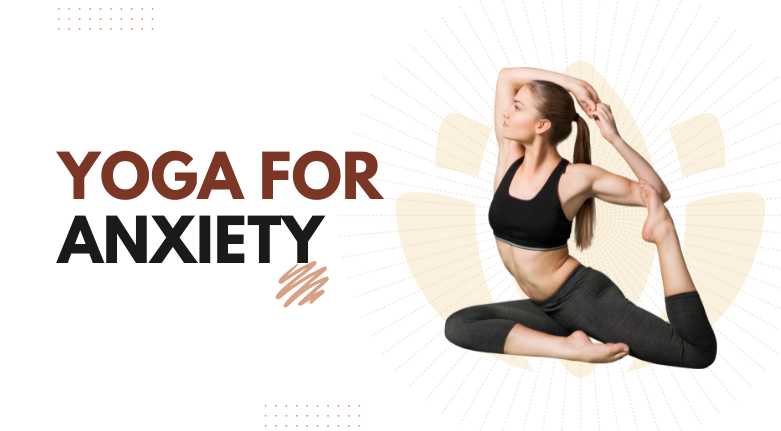The Mind is constantly preoccupied with many thoughts, both useful and superfluous. It takes a lot of practice to become a master of the mind. Perceptions and behavior as a whole are affected by the mind, more specifically thoughts. One can either stop thinking and think of something else, or one can stop thinking altogether. Body and mind are intertwined and dependent on one another. These days, mental and physical health issues including stress and anxiety are quite prevalent. Anxiety disorders can range in severity from moderate to severe. All age groups are susceptible to anxiety problems.
What is the reason behind the anxiety problem?
In many situations in life, we naturally feel anxious. However, if this feeling persists and interferes with our daily activities, we refer to this as having an anxiety disorder. Anxiety disorders can be brought on by a variety of factors. In some circumstances, the parts of the brain that regulate fear and emotions may be involved. This issue could be influenced by both genetic and environmental factors.
- Common outside causes that contribute to anxiety disorders include:
Stress is brought on by a serious sickness. - Workplace Stress
- Tension in a romantic partnership, such as a marriage.
- Financial difficulties
- The negative consequences of some long-term drugs, etc.
TYPES OF ANXIETY DISORDERS
➢ Generalised anxiety disorder.
When confronted with stressful situations like contests, exams, public speaking, etc., the majority of people experience anxiety and worry. These are all ongoing concerns and phobias that interfere with day-to-day activity. Insomnia, gastrointestinal distress, restlessness, exhaustion, etc. are some symptoms.➢ Panic disorder
Repeated unannounced panic attacks that can cause numerous issues in daily life include perspiration, shortness of breath, a raised heart rate, and other symptoms. - ➢ Obsessive Compulsive Disorder.
Some persons develop excessive compulsive behaviors and obsessive thoughts that they may not be able to control. Unwanted thoughts and behaviors that people feel obliged to exhibit are its hallmarks. For e.g. excessively checking locks, switches, and other items twice
➢ Phobia
Phobia is a term used to describe a condition when a person experiences severe dread of things that are not very threatening. Fear of animals, fear of heights, fear of enclosed spaces, and other common phobias are included here.
➢ Social Anxiety Disorder (SAD)
The primary defining trait of SAD is the fear of being perceived poorly by others and publicly humiliated. Performing in front of others and meeting new individuals will be difficult for many SAD patients. - ➢ Post-Traumatic Stress Disorder(PTSD)
PTSD is a term used to describe when a person goes through a physical or emotional trauma in life that may result in an anxiety disorder.
YOGA THERAPY FOR ANXIETY DISORDERS.
Yoga is a healthy method that can help you get rid of or go past these ingrained anxieties and concerns. A mind-body connection exists. Yoga is an inexpensive and simple method for reducing stress and anxiety that combines asana, breathing exercises, and pranayama with meditation and relaxation techniques. It is preferable to seek counseling first before beginning therapy if a person has a long history of anxiety disorders or if they are severe.
Regular practice of a few asanas, such as Vrikshasana, Tadasana, Vajrasana, Shashankasana, Shavasana, Uttanpadasana, and Makarasana, as well as pranayama, such as anulom-vilom, will assist to clear the mind of all tiredness and bad ideas.
Keep an eye on how deeply you inhale and exhale. After exhaling, continue to hold your breath for a few seconds. Open your eyes and notice your breathing while observing your abdominal and chest movements if the negative thoughts start to bother you again. Repeating the same action will help to stop your mind from racing with ideas.
Yoga nidra and other forms of deep relaxation are very helpful for treating anxiety problems. Relaxation and yoga nidra are qualitatively different. The goal of this “sleep” is to achieve a more joyful state of consciousness through a much deeper level of relaxation than typical sleep. The goal of yoga nidra is to calm the mind and promote wellness.
Neurotransmitters like serotonin and norepinephrine are reduced during anxiety and depression. Additionally, an elevated cortisol level contributes to depression by controlling serotonin and norepinephrine function. Yoga assists in lowering cortisol levels, which has a counter-regulatory impact to lessen the signs and symptoms of depression and anxiety.
You can practice meditation to sharpen your focus and calm your mind. It has been demonstrated to be an excellent stress management strategy. This method is a promising new remedy for illnesses caused by stress. The practice of meditation suggests a potential function in lowering obsessive and maladaptive behaviors. These methods drastically modify theta and alpha EEG rhythms in comparison to simply relaxing.
Yoga is crucial in daily life, not just for those who suffer from anxiety disorders but also to enhance general health and quality of life. Yoga is a regular practice that promotes both physical and mental tranquility.
“YOGA is a secret of being healthy.”
Ref: Ministry Of Ayush, Government of India





